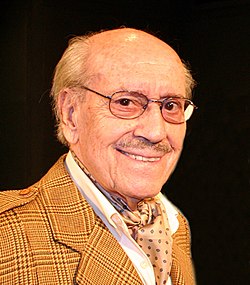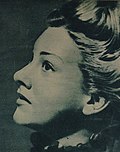Españolada

Españolada (translated in English as Typically Spanish) is a derogatory term to those artistic works that gives an exaggerated image of Spanish people based on stereotypes. One of the most notorious example is the Andalusian folklore, being (for example) flamenco very popular among foreign people.[1]
This term has another meaning that focuses on any flamboyant and messy effort that actually is worthless, for example the expression:[2]
Matar a una hormiga con una bomba atómica
To kill one ant with one atomic bomb
Background
This distortion about Spain would have its beginnings in the 19th century, when several European writers and artists from the romanticism era made popular the "Spanish Myth".[3][4] One of those famous novels inspired in Spain were Carmen by Prosper Mérimée.
Cinema
Regarding the cinema, it was created in the 1930s as a subgenre developed after the Spanish Civil War and Francoism.[5] Some known productions were: El turismo es un gran invento, Amor a la española, 40 grados a la sombra, Vente a Alemania, Pepe and Abuelo made in Spain among others.
According José Luis Navarrete, these films were so popular because they gave the population an unrealistic and idyllic vision about how Spain should be.[6]
Españolada Media
Amparo Rivelles during her long career, she earned a LatinACE award, a Goya Award, as well as a National Theater Prize.
Marisol was a popular wunderkind during Francoism.
Several international blockbusters were shot in Spain in the 1950s and 1960s. An example is the Italian-American Samuel Bronston-produced epic historical drama El Cid. In the image, shooting of the film in the Castle of Belmonte.
Pedro Almodóvar in 1988
Penélope Cruz with Volver director Pedro Almodóvar at the 31st Goya Awards in 2017
Spanish actress Paz Vega at the 2019 Goya Award's
Juan Molina, Quique San Francisco (a prominent cine quinqui actor), Polo Aledo, Enrique Viciano and Óscar Ladoire in 1978
References
- ↑ Artículo El País: Españolada.
- ↑ "DLE: Españolado, -da". Real Academia de la Lengua Española. Retrieved 12 April 2018.
- ↑ Enrique Valdivieso (1992). Historia de la pintura sevillana. Guadalquivir. ISBN 84-86080-76-2.
- ↑ Several authors (2000). "Reivindicar el costumbrismo". Ínsula. Archived from the original on 2016-09-25. Retrieved 2018-04-12.
{{cite journal}}: Cite journal requires|journal=(help) - ↑ Gubern, Román (1977). El cine sonoro en la II República (in español). Barcelona: Lumen.
- ↑ Navarrete, José Luis (2009). Historia de un género cinematográfico: la españolada (in español). Madrid: Quiasmo.








